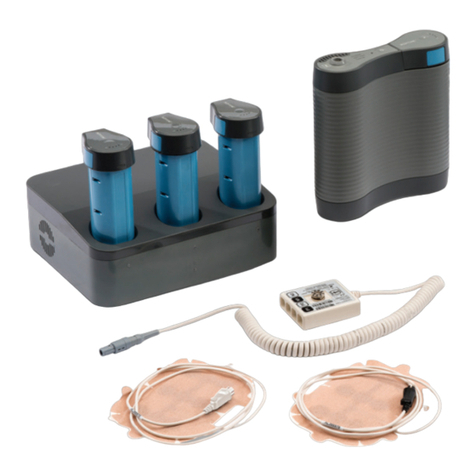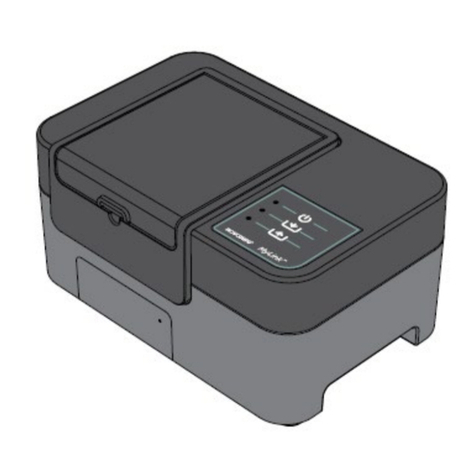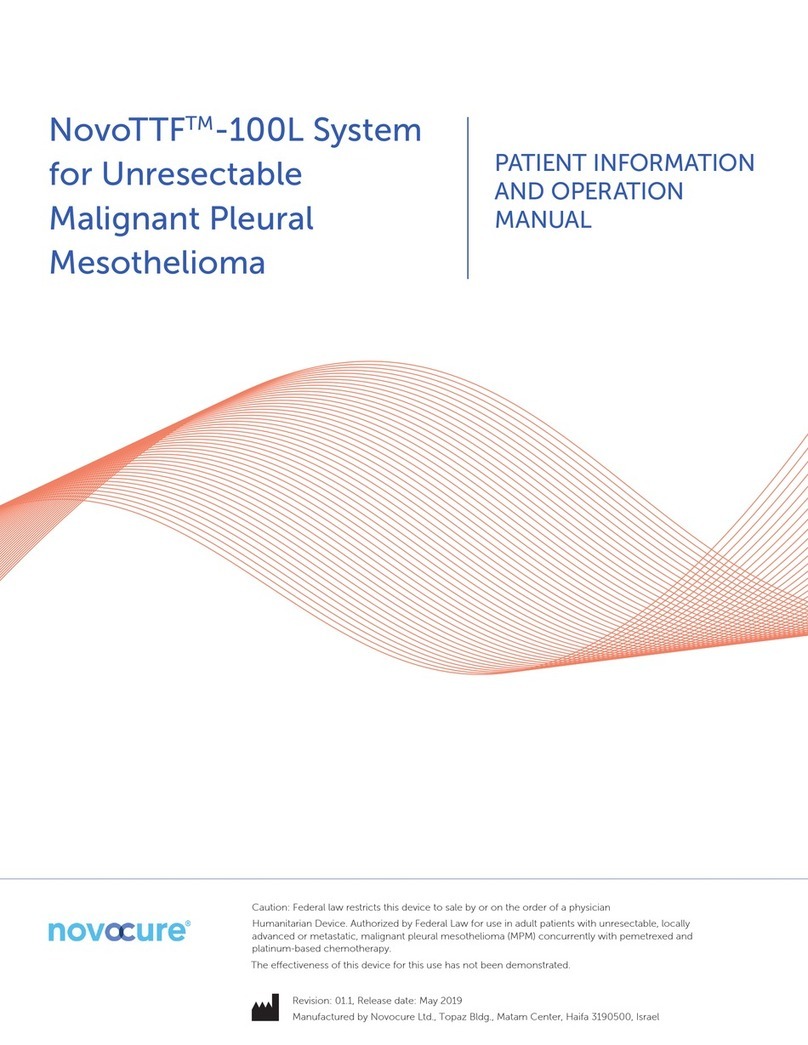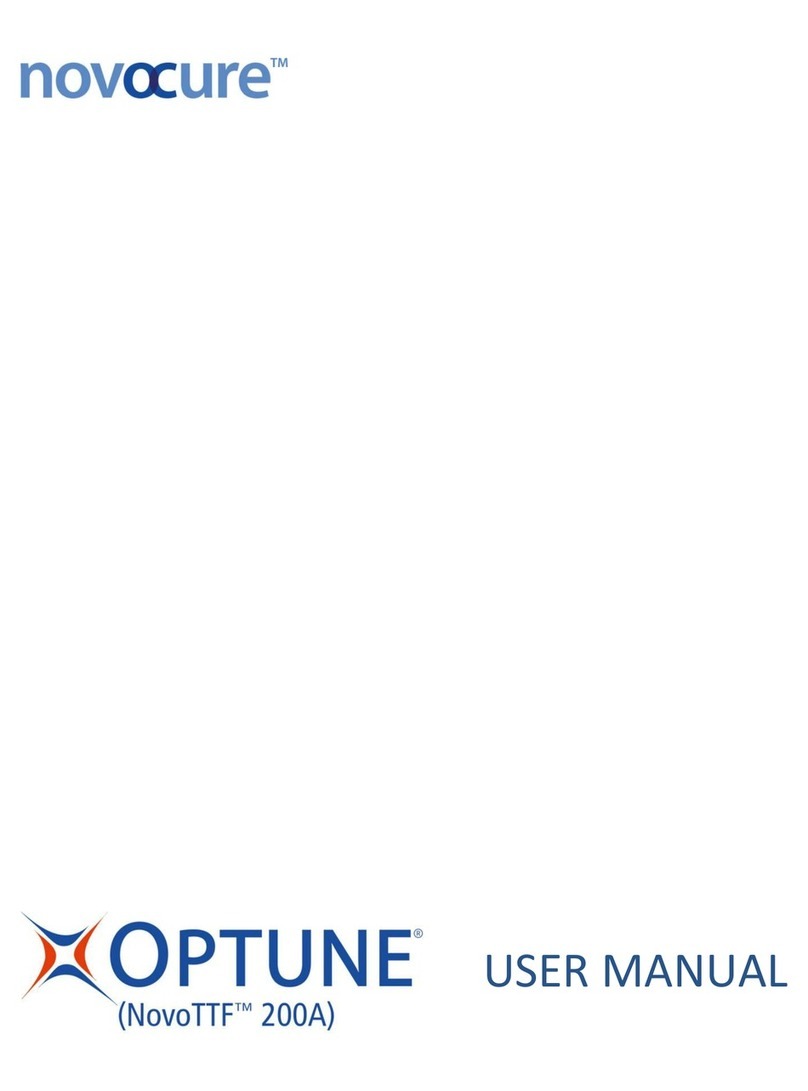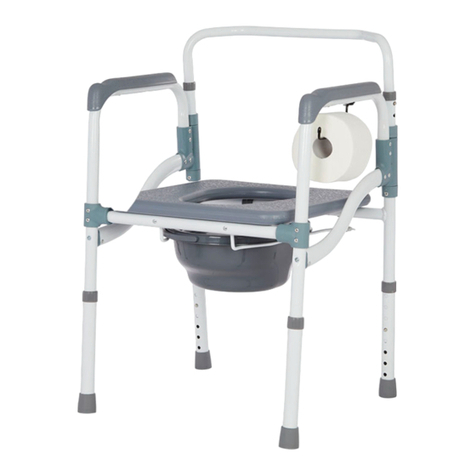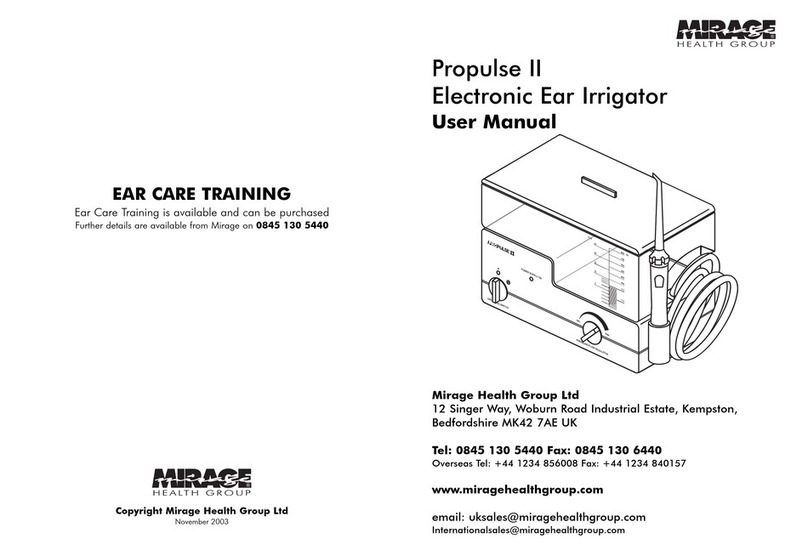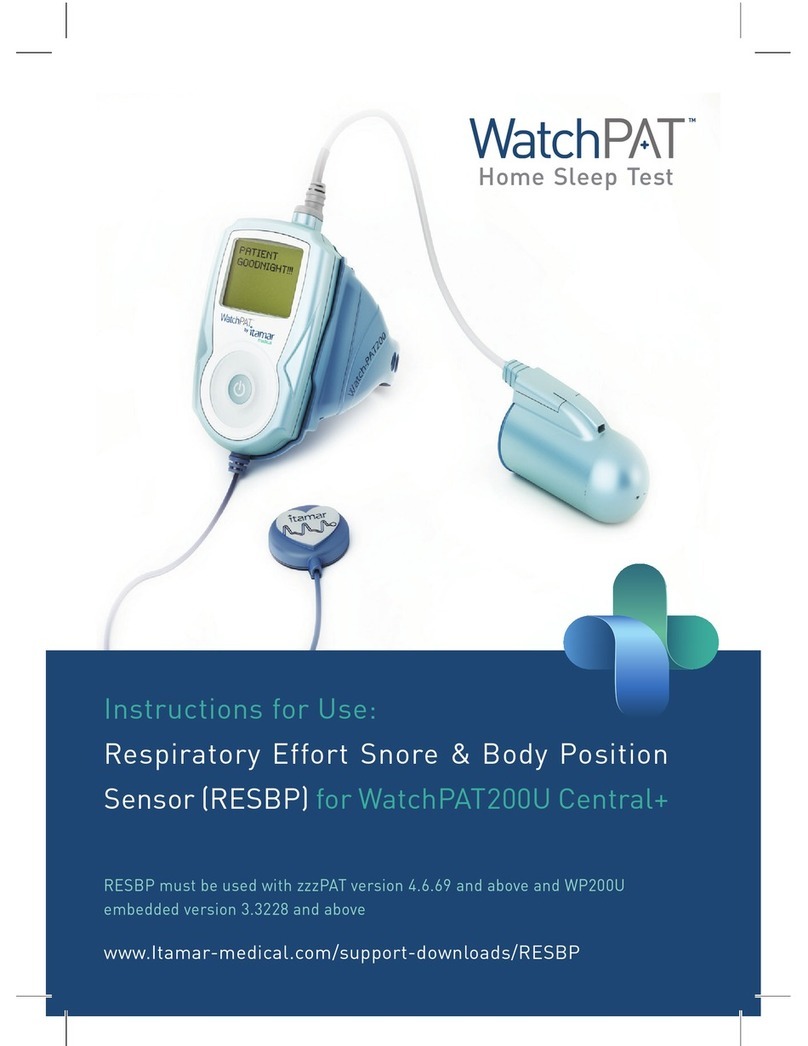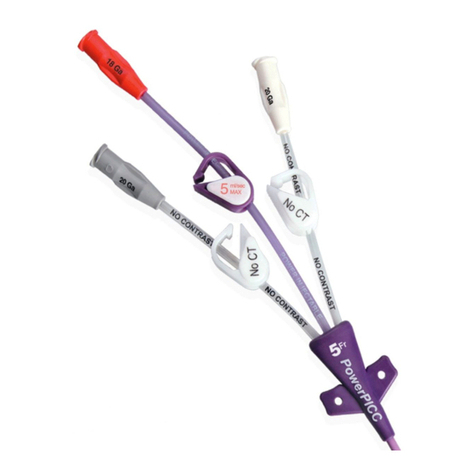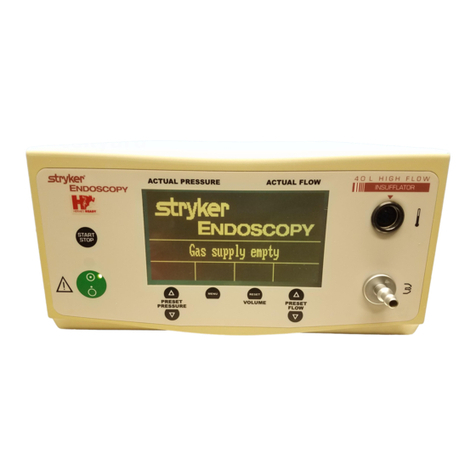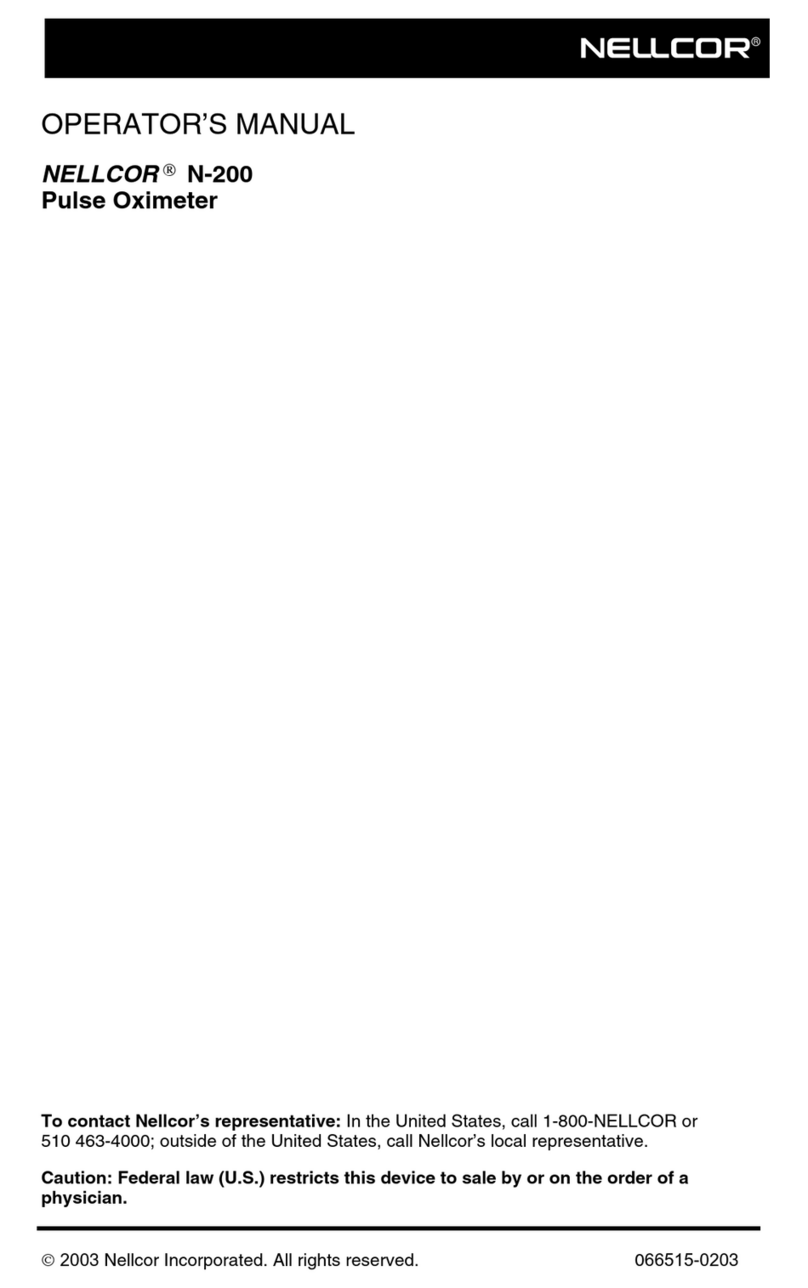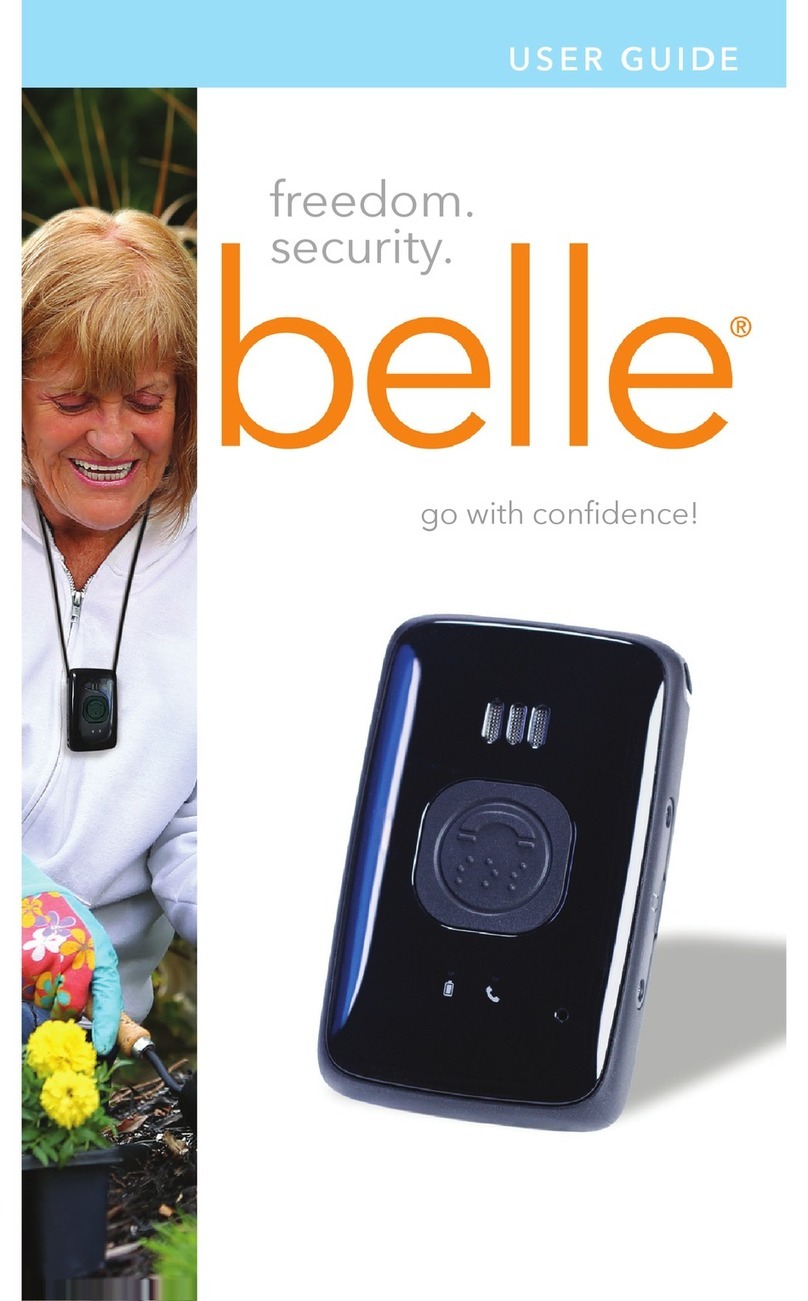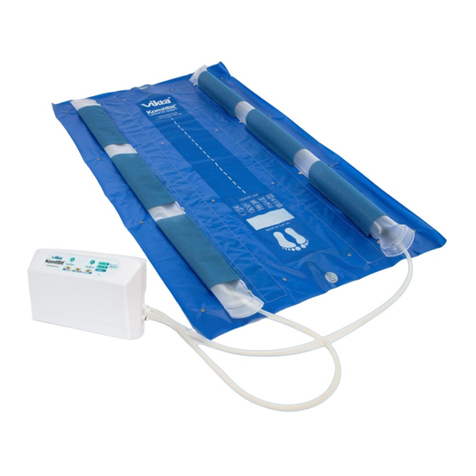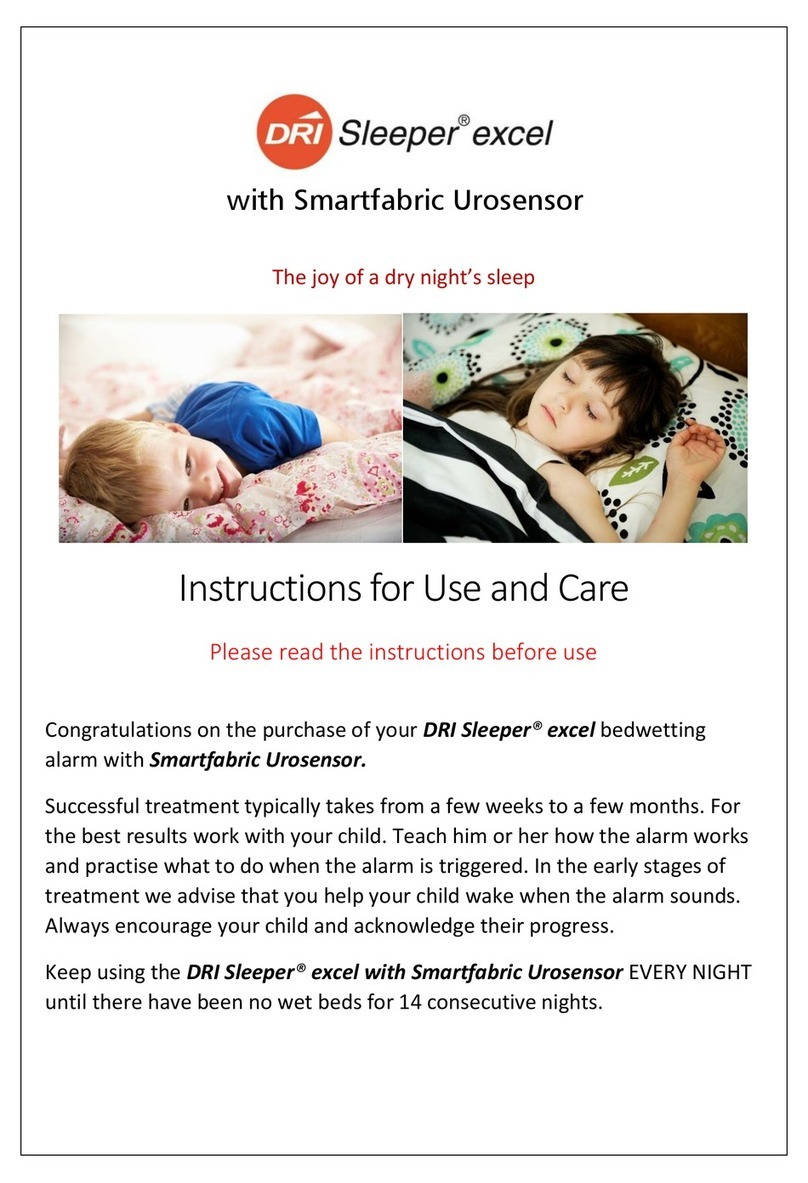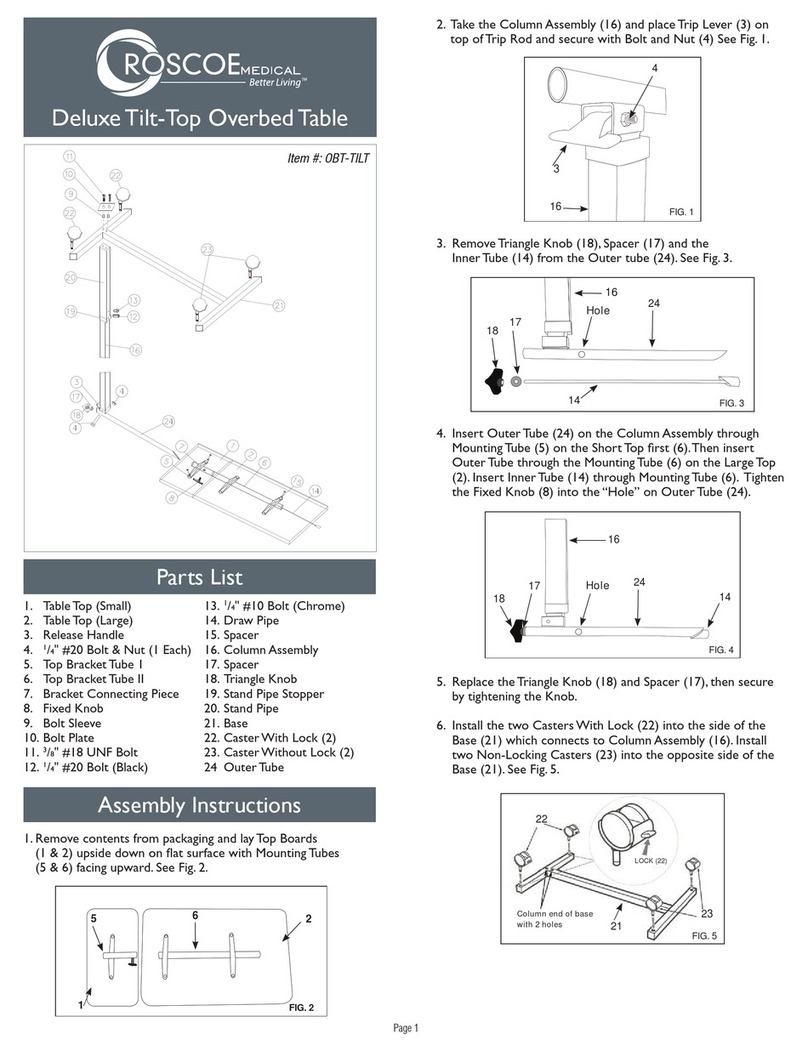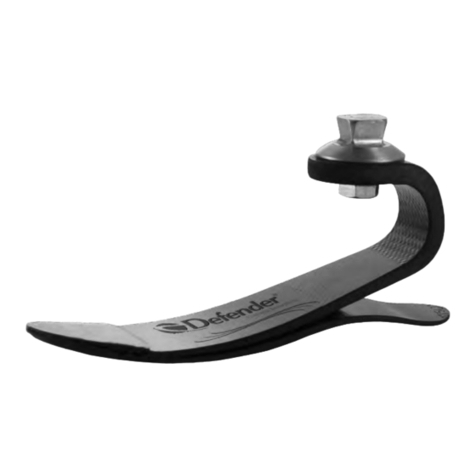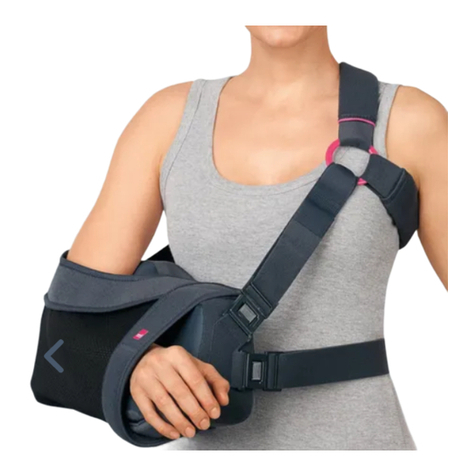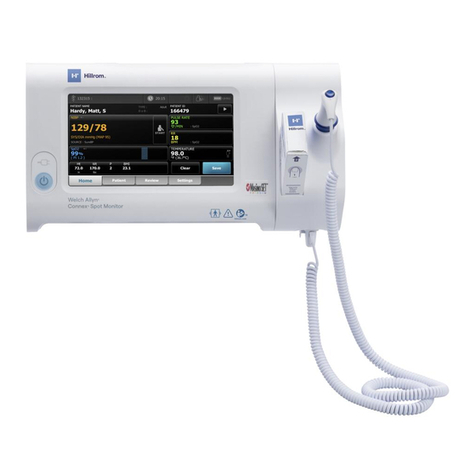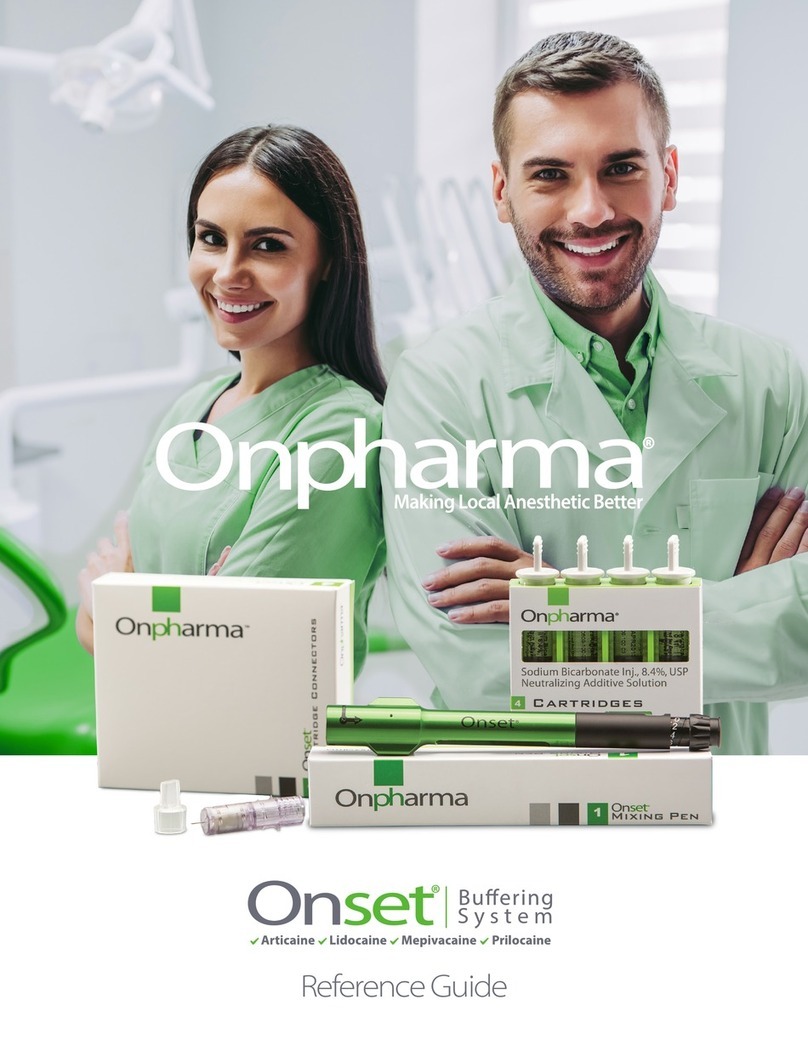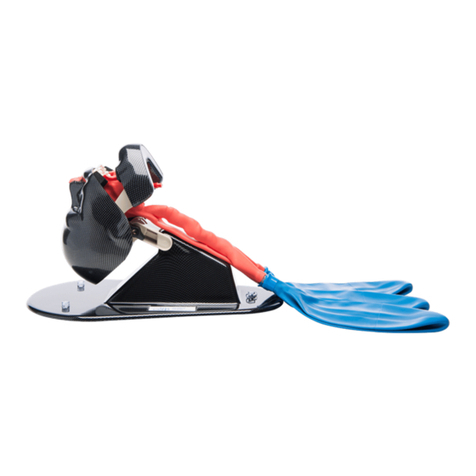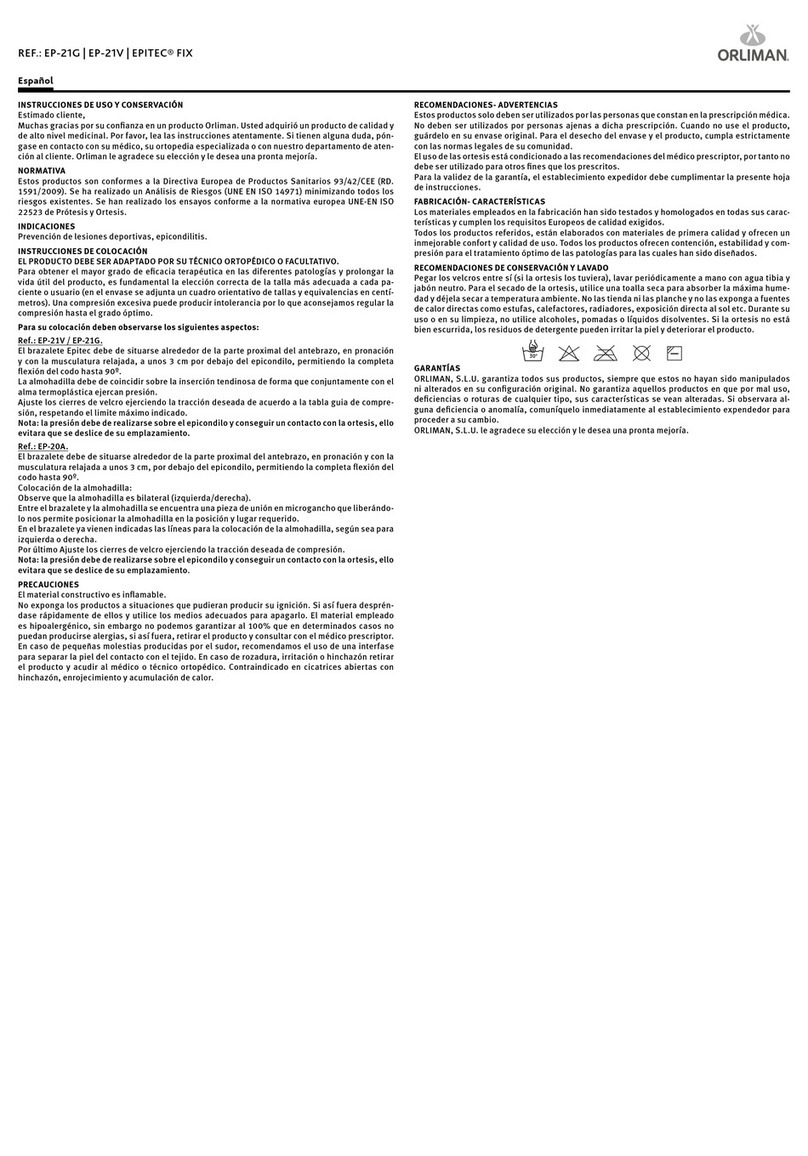novocure TFT9200 User manual

QSD-EUUM-100 EU(EN) Rev03.0 Optune Lua NSCLC User Manual
Page 1/51
For Non Small Cell Lung
Cancer
User Manual
Model Number: TFT9200
Ref Number :TFT9201EU

QSD-EUUM-100 EU(EN) Rev03.0 Optune Lua NSCLC User Manual
Page 2/51
Contents
1. ABOUT THE OPTUNE LUA TREATMENT KIT AND THE ILE TRANSDUCER ARRAYS ............. 4
A. DEVICE DESCRIPTION..................................................................................................... 4
B. INTENDED PURPOSE ...................................................................................................... 4
C. CONTRAINDICATIONS, WARNINGS, PRECAUTIONS AND NOTICES ............................... 4
Contraindications.............................................................................................................. 4
Warnings ........................................................................................................................... 5
Precautions ....................................................................................................................... 6
Notices............................................................................................................................... 7
2. CLINICAL BENEFIT AND CLINICAL EVIDENCE ..................................................................... 8
3. WHAT ARE THE RISKS OF USING OPTUNE LUA TREATMENT KIT AND ILE TRANSDUCER
ARRAYS? .................................................................................................................................... 9
4. MECHANISM OF ACTION AND PERFORMANCE................................................................. 9
5. OVERVIEW OF THE OPTUNE LUA TREATMENT KIT AND ILE TRANSDUCER ARRAYS ....... 10
6. GLOSSARY OF SYMBOLS .................................................................................................. 12
7. BEFORE YOU BEGIN ......................................................................................................... 16
8. DIRECTIONS FOR USE....................................................................................................... 17
8.1. REMOVING THE TRANSDUCER ARRAY FROM ITS PACKAGE........................................ 17
8.2. PREPARING YOUR SKIN FOR TRANSDUCER ARRAY PLACEMENT ................................ 18
8.3. PLACING THE TRANSDUCER ARRAYS........................................................................... 19
8.4. CONNECTING THE ILE TRANSDUCER ARRAYS TO THE OPTUNE LUA DEVICE .............. 20
8.5. THE CONNECTION CABLE ............................................................................................ 21
8.6. STARTING & STOPPING THE DEVICE............................................................................ 22
8.7. CONNECTING AND DISCONNECTING THE BATTERY .................................................... 26
8.8. CHARGING THE BATTERY............................................................................................. 28
8.9. USING THE PLUG IN POWER SUPPLY........................................................................... 31
8.10. DISCONNECTING FROM THE DEVICE....................................................................... 32
8.11. CARRYING THE DEVICE ............................................................................................ 34
9. ENVIRONMENTAL CONDITIONS FOR OPERATION, STORAGE AND TRANSPORTATION .. 35
10. EXPECTED LIFE ............................................................................................................. 36
11. DISPOSAL ..................................................................................................................... 36
12. TROUBLESHOOTING .................................................................................................... 37
13. ASSISTANCE AND INFORMATION ................................................................................ 40
14. GLOSSARY .................................................................................................................... 41
15. APPLICABLE STANDARDS............................................................................................. 42

QSD-EUUM-100 EU(EN) Rev03.0 Optune Lua NSCLC User Manual
Page 3/51
16. INPUT OUTPUT SPECIFICATIONS ................................................................................. 43
17. EMITTED RADIATION & ELECTROMAGNETIC COMPATIBILITY .................................... 44
This manual is intended for patients receiving TTFields treatment using the Optune Lua
treatment kit and the ILE Transducer Arrays.

QSD-EUUM-100 EU(EN) Rev03.0 Optune Lua NSCLC User Manual
Page 4/51
1. ABOUT THE OPTUNE LUA TREATMENT KIT AND THE ILE
TRANSDUCER ARRAYS
1.1. DEVICE DESCRIPTION
The Optune Lua treatment kit is a portable device. It produces electric fields, called
tumor treating fields (“TTFields”). ILE Transducer Arrays connected to the device deliver
TTFields to the chest. The TTFields are intended to destroy lung cancer cells.
The device is intended for home treatment of at least 12 hours a day on a monthly
average. The Optune Lua treatment kit refers to the Electric Field Generator (Optune
Lua, the device), connection cable, power supply, battery, battery charger and ILE
Transducer Arrays.
1.2. INTENDED PURPOSE
The Optune Lua treatment kit is indicated for the treatment of stage IV, non-squamous,
non-small cell lung cancer, in combination with Pemetrexed (Alimta), after failure of first
line treatments.
The treatment is intended for adult patients, 18 years of age or older, and should be
started more than four weeks after the latest surgery, radiation therapy or
chemotherapy.
The device is intended for home treatment of at least 12 hours a day and should be used
until disease progression in the chest or upper abdomen
1.3. CONTRAINDICATIONS, WARNINGS, PRECAUTIONS
AND NOTICES
Contraindications
Do not use the Optune Lua treatment kit if you have an active implanted medical device.
Examples of active electronic devices include deep brain stimulators, spinal cord
stimulators, vagus nerve stimulators, pacemakers and defibrillators. Use of the Optune
Lua treatment kit together with implanted electronic devices have has not been tested
and may lead to malfunctioning of the implanted devices.
Do not use the Optune Lua treatment kit if you are known to be sensitive to conductive
hydrogels like the gel used on electrocardiogram (ECG) stickers or transcutaneous
electrical nerve stimulation (TENS) electrodes. In this case, skin contact with the gel used

QSD-EUUM-100 EU(EN) Rev03.0 Optune Lua NSCLC User Manual
Page 5/51
with the Optune Lua treatment kit may commonly cause increased redness and itching,
and rarely may even lead to severe allergic reactions such as shock and respiratory failure.
Do not use the Optune Lua treatment kit if you have clinically significant hepatic or renal
disease.
Do not use the Optune Lua treatment kit if you have significant additional neurological
disease (primary seizure disorder, dementia, progressive degenerative neurological
disorder, meningitis or encephalitis, hydrocephalus associated with increased intracranial
pressure)
Do not use the Optune Lua treatment kit if you have one of the following conditions:
Congestive heart failure, angina pectoris that is not medically controlled, history of
myocardial infarction 1 year from start of device treatment, uncontrolled hypertension or
arrhythmias, active infection requiring i.v. antibiotics, unstable diabetes mellitus or other
contraindication for corticosteroid therapy and active ulcer.
Warnings
Warning - Use the Optune Lua treatment kit only after receiving training from qualified
personnel, such as your doctor, a nurse, or other medical personnel who have completed
a training course given by the device manufacturer (Novocure GmbH Switzerland). Ask to
see a certificate signed by Novocure that says they completed a training course. Your
training will include a detailed review of this manual and practice in the use of the
treatment kit. In addition, you will be trained in what to do if there are problems with
treatment. Use of the Optune Lua treatment kit without receiving this training can result
in breaks in treatment and may rarely cause increased skin rash, open sores on your body,
allergic reactions or even an electric shock.
Warning - In case of skin irritation, which appears as redness under the transducer arrays
(a mild rash), talk to your physician before starting any treatment for skin irritation. Your
physician may recommend using over-the-counter topical steroids when replacing the
transducer arrays. This will help relieve your skin irritation. If you do not use this cream,
the skin irritation can become more serious and may even lead to skin break down,
infections, pain and blisters. If this happens, stop using the topical steroid cream and
contact your doctor. Your doctor will supply you with an antibiotic cream to use when
replacing the transducer arrays. If you do not use this cream, your symptoms may
continue and your doctor may ask you to take a break from treatment until your skin
heals. Taking a break from treatment may lower your chance to respond to treatment.
Warning - All servicing procedures must be performed by qualified and trained personnel.
If you attempt to open and service the treatment kit alone you may cause damage to the

QSD-EUUM-100 EU(EN) Rev03.0 Optune Lua NSCLC User Manual
Page 6/51
treatment kit. You could also get an electric shock by touching the inner parts of the
device.
Warning - No modification of this equipment is allowed. – Do not use the Optune Lua
device with applied parts or accessories other than those described in this manual.
Precautions
Caution – Do not use any parts that do not come with the Optune Lua treatment kit, or
that were not sent to you by the device manufacturer or given to you by your doctor. Use
of other parts, manufactured by other companies or for use with other devices, can
damage the device. This may lead to a break in treatment.
Caution - Do not use the Optune Lua treatment kit if any parts look damaged (torn wires,
loose connectors, loose sockets, cracks or breaks in the plastic case). Use of damaged
components can damage the device and cause a break in treatment.
Caution - Do not wet the Optune Lua device or transducer arrays or use in the shower or
in heavy rain. Getting the device wet may damage it, preventing you from receiving
treatment for the right amount of time. Getting the transducer arrays very wet is likely to
cause the transducer arrays to come loose from your skin. If this happens, the device will
turn off and you will need to change the transducer arrays.
Caution - Before connecting or disconnecting the transducer arrays, make sure that the
Optune Lua power switch is in the OFF position.
Caution - Do not use the Optune Lua treatment kit if you are pregnant, think you might
be pregnant, or are trying to get pregnant. If you are a woman who is able to get pregnant,
you must use birth control when using the device. The Optune Lua treatment kit was not
tested in pregnant women. It is unknown what side effects the device may cause if you
are pregnant or if it will be effective.
Caution -Connection cable may pose a hazard of strangulation. Avoid wearing the
connection cable around your neck.
Caution – do not place the power supply to make it difficult to disconnect the wall plug-
in from the wall socket.
Caution – Covering the power supply may result in the power supply overheating.

QSD-EUUM-100 EU(EN) Rev03.0 Optune Lua NSCLC User Manual
Page 7/51
Notices
Notice! The Optune Lua treatment kit and the transducer arrays will activate metal
detectors.
Notice! You should use the Optune Lua treatment kit for at least 12 hours a day to get the
best response to treatment. Using the Optune Lua treatment kit for less than 12 hours a
day lowers the chances that you will respond to treatment.
Notice! Do not stop using the Optune Lua treatment kit even if you have used it less than
the recommended 12 hours per day. You should stop using the device only if your doctor
tells you to. Stopping treatment could lower the chances that you will respond to
treatment.
Notice! If you plan to be away from home for more than 1 hour, carry an extra battery
and/or the power supply with you in case the battery you are using runs out. If you do not
take an extra battery and/or the power supply, you may have a break in your treatment.
Breaks in treatment may lower your chance to respond to the treatment.
Notice - Make sure you have at least 12 extra transducer arrays at all times. This will last
you until the next transducer array shipment arrives. Remember to order more transducer
arrays when there are at least 12 extra transducer arrays left. If you do not order
transducer arrays in time, you may have a break in your treatment.
Notice! Batteries may weaken over time and need to be replaced. You will know this has
happened when the amount of time the device can run on a fully charged battery begins
to shorten. For example, if the low battery indicator light flashes within only 1 hour from
the start of treatment, replace the battery. If you do not have replacement batteries when
your batteries run out, you may have a break in your treatment.
Notice - You should carry the Troubleshooting Guide (Section 12 of the patient user
manual) at all times. This guide is necessary to ensure the Optune Lua treatment kit works
properly. If you do not operate the treatment kit correctly, you may have a break in your
treatment.
Notice! Do not block the device vents located on the front and back of the Optune Lua
device. Blocking the vents may cause the device to overheat and turn off, leading to a

QSD-EUUM-100 EU(EN) Rev03.0 Optune Lua NSCLC User Manual
Page 8/51
break in treatment. If this happens, unblock the vents, wait 5 minutes and restart the
device. In case the vents are blocked with pet hair or dust, return the device for service.
Notice! Do not block the battery charger vents located on the left and right sides of the
battery charger. Blocking the vents may cause the charger to overheat. This could prevent
your batteries from charging. If the vents become blocked with pet hair or dust, return
the charger for service.
Notice - The transducer arrays are for single use and should not be taken off your body
and put back on again. If you put a used transducer array back on your chest again, it may
not stick well to your skin and the device could turn off.
Notice - Keep the Optune Lua treatment kit out of the reach of children and pets.
Notice - The device has a cord that may cause tripping when connected to an electric
socket.
2. CLINICAL BENEFIT AND CLINICAL EVIDENCE
Expected clinical benefit for the patient
Patients using Optune Lua together with cancer drugs lived longer compared to patients
who used cancer drugs alone.
Median progression free survival of advanced (stage IV) NSCLC patients treated with the
Optune Lua device together with Pemetrexed, following at least one line of prior
chemotherapy, was more than double that of the expected median with Pemetrexed
alone based on comparison with historical control data. Also, a statistically significant
increase in time to disease progression was seen (median overall survival of 13.8 months
compared to 8.3 months in historical control patients). The one-year survival rate was 57%
compared to the historical control of 30% reported to Pemetrexed alone.
Clinical experience – a multi-center clinical trial has shown that Optune Lua (formerly
NovoTTF-100L) treatment together with standard chemotherapy (Pemetrexed) was well
tolerated with no device related serious adverse events seen in any of the 42 patients
treated with an average follow up of 6 months. No cardiac or other electric field based
serious adverse events were seen in any of the patients. No increase in chemotherapy
related toxicity was seen. Compliance with treatment was very high with 85% of patients
receiving treatment on average 12 hours a day.
Mild to moderate contact dermatitis appeared beneath the transducer array gel in all
patients during treatment, which was manifested by a red rash in most cases. In rare
cases, blisters, itching, or pain were seen beneath the transducer arrays. The skin reaction
improved with use of topical corticosteroids. In persistent cases, the condition resolved
with the use of low dose oral corticosteroids. Regular relocation of the transducer arrays
was necessary in order to allow for continuous treatment.

QSD-EUUM-100 EU(EN) Rev03.0 Optune Lua NSCLC User Manual
Page 9/51
3. WHAT ARE THE RISKS OF USING OPTUNE LUA TREATMENT
KIT AND ILE TRANSDUCER ARRAYS?
Skin irritation is often seen under the ILE Transducer Arrays when using the Optune Lua
treatment kit. This will look like a red rash, small sores or blisters on your body. In general,
this will not cause skin damage that cannot be fixed. The irritation can be treated with
steroid cream or by moving the ILE Transducer Arrays. If you do not use steroid cream,
the skin irritation could become more serious. This may lead to open sores, infections,
pain and blisters. If this happens, stop using the steroid cream and contact your doctor.
4. MECHANISM OF ACTION AND PERFORMANCE
Your doctor has prescribed the Optune Lua treatment kit for use at home because you
are a good candidate for treatment with the device.
The Optune Lua treatment kit is a portable device. It produces electric fields, called tumor
treating fields (“TTFields”). Transducer arrays connected to the device deliver TTFields to
your chest. The TTFields are intended to destroy lung cancer cells.
The device and battery are carried in a shoulder bag. You should use them as much as you
can.
In this manual, the term “Optune Lua treatment kit” refers to the Electric Field Generator
(also called “the device”), connection cable, power supply, battery, battery charger and
ILE Transducer Arrays.
Optune Lua is a portable medical device that delivers electric fields called “TTFields” to
the chest using transducer arrays. TTFields are intended to kill cancer cells.
The Science - The TTFields produce electric forces which disrupt cancer cell growth in cell
cultures and in animals by inhibiting microtubule polymerization and by causing disruption
of cell integrity during cytokinesis/division (see Kirson et al., Cancer Research 2004, Kirson
et al., PNAS 2007, Salzberg et al., Onkologie 2008 and Kirson et al., BMC Medical Physics
2009).

QSD-EUUM-100 EU(EN) Rev03.0 Optune Lua NSCLC User Manual
Page 10/51
5. OVERVIEW OF THE OPTUNE LUA TREATMENT KIT AND ILE
TRANSDUCER ARRAYS
1. Optune Lua Power Supply (SPS9200)
2. Charger for Optune Lua (ICH9100)
3. ILE Transducer Array (Small: ILE1010, ILE1010W)
(Large: ILE1030, ILE1030W))
4. Optune Lua Connection Cable (CAD9100)
5. Optune Lua Battery (IBH9200)
6. Optune Lua electric field generator – the device (TFT9200)
7. Carrying Bag
The Optune Lua device is an automatic system. The TTFields treatment should be kept on as
continuously as possible (at a minimum 12 hours a day, 7 days a week). Breaks from treatment
should be kept as short as possible.
You will need to learn how to place it in a carrying bag, connect a battery and operate the
treatment kit. The following controls will allow you to do this:

QSD-EUUM-100 EU(EN) Rev03.0 Optune Lua NSCLC User Manual
Page 11/51
1Power Supply Port
2Optune Lua Power Switch
3Connection Cable (CAD) Socket
4POWER / BATTERY / ERROR Indicators
5TTFields ON / OFF Button
6Battery Test Button
7Battery Gauge
Front
Back
1
2

QSD-EUUM-100 EU(EN) Rev03.0 Optune Lua NSCLC User Manual
Page 12/51
6. GLOSSARY OF SYMBOLS
Follow instructions for use
Medical Device
Manufacturer information:
Novocure GmbH, Business Village D4, Park 6/Platz 10, 6039
Root, Switzerland
Model number
Part Number
Serial number
Lot Number
Unique Device Identifier
Indicates a device carries Unique Device Identifying
information.
Manufacture date

QSD-EUUM-100 EU(EN) Rev03.0 Optune Lua NSCLC User Manual
Page 13/51
YYY-MM
Use-by date/Expiry date
Caution
Consult the instructions for use for important cautionary
information such as warnings and precautions
Waste Electrical and Electronic Equipment recycling “WEEEE
disposal” Contact technical support to arrange for proper
disposal of transducer arrays that are used up or no longer in
use.
Batteries are Lithium Ion.
Contact technical support to arrange for proper disposal of
batteries that are used up or no longer in use
Do not re-use:
The ILE Transducer Arrays are for single use and should not be
re-used.
Indicates that the packaged products are sterile, the
products have been sterilized by irradiation and the
packaging is a single sterile barrier system
Sterile/sterilization method
The ILE Transducer Arrays are sterilized by Gamma irradiation
Do not re-sterilize
Do not use if package is damaged
Do not use the ILE Transducer Arrays if their packaging is
breached.

QSD-EUUM-100 EU(EN) Rev03.0 Optune Lua NSCLC User Manual
Page 14/51
Protect from heat and radioactive sources
The Optune Lua device, additional parts and ILE Transducer
Arrays should be kept away from extreme heat and sources of
radiation
IPxx
IP code: A coding system to indicate the degrees of protection
provided by an enclosure against access to hazardous parts or
water.
IP21: The power supply protects persons against access to
hazardous parts with fingers. Protects the equipment inside
the enclosure against ingress of solid foreign objects of 12.5
mm in diameter or greater and against ingress of vertical
falling water drops.
IP22: The device protects persons against access to hazardous
parts with fingers. Protects the equipment inside the enc
losure
against ingress of solid foreign objects of 12.5 mm in diameter
or greater and against ingress of vertical falling water drops
when enclosure is tilted up to 15°.
Keep dry.
Do not enter rooms with high humidity or danger of direct
exposure to water while wearing the device.
Do not use the device if not within its carrying bag.
Do not expose the device to direct rain.
For indoor use only
Class II equipment per IEC 60601-1
BF type applied part
Symbolizes the part which comes in contact with the patient

QSD-EUUM-100 EU(EN) Rev03.0 Optune Lua NSCLC User Manual
Page 15/51
Storage Temperature range
Do not expose to temperatures below -5°C or above 40°C
Storage humidity range.
Do not expose to humidity below 15% or above 93%
Fragile, handle with care
P1 P2 N1 N2 black and white coding on the connection box
CE Mark with Notified Body Number
European authorized representative
MDSS GmbH
Schiffgraben 41
30175 Hannover, Germany
Importer details:
Novocure Netherlands B.V., Prins Hendriklaan 26, 1075 BD,
Amsterdam, The Netherlands
Power ON / OFF switch for the device and battery charger:
When the switch is in the I position the device is ON and will
light up green. When the switch is in the O position the device
is OFF

QSD-EUUM-100 EU(EN) Rev03.0 Optune Lua NSCLC User Manual
Page 16/51
7. BEFORE YOU BEGIN
•You will need four (4) ILE Transducer Arrays (sterile) every 3-4 days in order
to maintain treatment with the Optune Lua treatment kit.
•You will need to make sure you have the right sized flank transducer arrays
for your chest size.
•Make sure you have ample supply of ILE Transducer Arrays to keep you going
until your next visit to your physician.
•Before using an ILE Transducer Array make sure the package is sealed by gently
rubbing the package between thumb and pointer finger on all four sides. The
package should be closed on all sides. There should be no openings in the package
seal. If the package is not sealed, the transducer array may be damaged. A
damaged transducer array will not work properly and may cause the device to
turn off. Do not use an ILE Transducer Array which has been opened previously.
•The ILE Transducer Arrays are for single use and should not be re-used.
•Maintenance and cleaning – The ILE Transducer Arrays are supplied sterile for
single use and thus do not require maintenance, cleaning or disinfection.
•The ILE Transducer Arrays are provided sterile for single use.

QSD-EUUM-100 EU(EN) Rev03.0 Optune Lua NSCLC User Manual
Page 17/51
8. DIRECTIONS FOR USE
8.1. REMOVING THE TRANSDUCER ARRAY FROM ITS
PACKAGE
•The ILE Transducer Arrays are supplied sterile and are to be used with the
Optune Lua treatment kit only.
•ILE Transducer Arrays come in two sizes – small and large. You should use two
large transducer arrays on the back and front of your chest. You should use
either two large or two small transducer arrays on both your flanks (on your
sides beneath your arm pits), depending on your chest size.
•Open the see-through envelopes of each of the four (4) ILE Transducer Arrays,
by gently pulling apart the opposing edges of the envelope. Hold the
transducer array as shown in the illustration

QSD-EUUM-100 EU(EN) Rev03.0 Optune Lua NSCLC User Manual
Page 18/51
8.2. PREPARING YOUR SKIN FOR TRANSDUCER ARRAY
PLACEMENT
•Wash your skin on the chest and flanks using a gentle soap.
•Remove any remnant adhesive from your skin from prior transducer
arrays by wiping with baby oil.
•If you have significant chest hair, shave your entire torso using an
electric shaver. Make sure no stubble is left.
•Wipe your skin with 70% Alcohol (medical grade – any manufacturer).
•If the skin is red, apply the steroid cream prescribed to you by your
physician.
•If you have any sores on your skin treat them as instructed by your
treating physician.
•Wait at least 15 minutes and gently wipe your skin again with 70%
Alcohol to facilitate adhesion of the transducer arrays to your skin.

QSD-EUUM-100 EU(EN) Rev03.0 Optune Lua NSCLC User Manual
Page 19/51
8.3. PLACING THE TRANSDUCER ARRAYS
Once every 3-4 days perform the following steps to replace your transducer arrays:
1) Remove the transducer arrays already on your chest and flanks by peeling
the medical tape away from your skin.
Note the black and white color of the transducer array connectors - each
pair of the same color will be positioned opposite to each other on your
body.
2) Remove the transducer array liner from the first transducer array.
3) Place the transducer array on your chest in the same location as before, but
shifting the transducer array 2 cm to avoid areas of redness
4) Place the other three ILE Transducer Arrays in the same fashion.
5) You will need to ask for assistance from a friend or family member to place
the back transducer array.
6) Press the entire rim of the transducer array tape to your skin.
•
BACK – LARGE ILE
SIDE – SMALL/LARGE ILE
FRONT – LARGE ILE

QSD-EUUM-100 EU(EN) Rev03.0 Optune Lua NSCLC User Manual
Page 20/51
8.4. CONNECTING THE ILE TRANSDUCER ARRAYS TO THE
OPTUNE LUA DEVICE
•Connect the four black and white transducer array connectors to the
corresponding black and white coded sockets on the Optune Lua connection
cable.
•Make sure the transducer arrays connect the following way:
oFront transducer array (large) connects to P1 (black)
oBack transducer array (large) connects to N1 (black)
oRight transducer array (either large or small) connects to P2 (white)
oLeft transducer array (either large or small) connects to N2 (white)
•Press firmly to verify the connectors are inserted all the way.
•Collect the transducer array wires together and bind with a small piece of tape
where convenient.
•You may clip the connection cable clip to your belt.
This manual suits for next models
1
Table of contents
Other novocure Medical Equipment manuals
